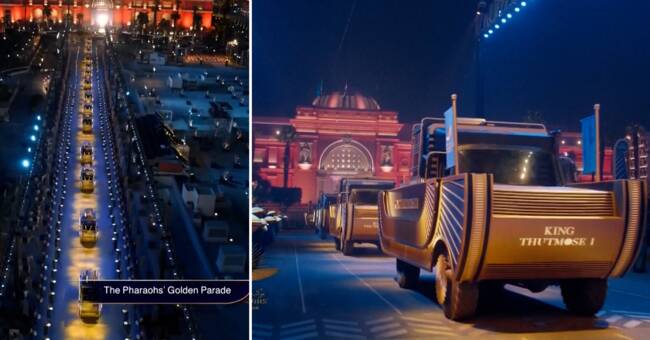It is about half a mile between the two museums between which the remains of the pharaohs were taken.
The procession followed a chronological order.
The oldest pharaoh Sekenenre Taa II, who ruled Egypt Egypt 3,600 years ago, was first threatened.
The move, called the Golden Parade, began on Saturday night, after a concert celebrating the event.
In addition to the many spectators who wanted to follow the parade, the security arrangements were extensive.
The ornate carriages had a specially built suspension to protect the mummies from impact.
The royal remains were encapsulated in nitrogen gas containers.
The Valley of the Kings
The mummified kingdoms almost all originate from an Egyptian era which in the history books is usually called the New Kingdom (around 1550-1070 BC).
The move went from the Egyptian Museum at Tahrir Square in central Cairo to the National Museum of Egyptian Civilization (NMEC) in the Fustat district.
"We chose the Museum of Civilization because for the first time we wanted to exhibit the mummies in a civilized way, for education, and not for entertainment, as is the case at the Egyptian Museum," says Egyptian archaeologist Zahi Hawass.
This is not the first trip for the 22 mummies.
They were found in two rounds at cemeteries in the Luxor area, including in the Valley of the Kings, which is located about 50 km south of Cairo.
Honors the mummies
Also in the parade were the historically significant pharaoh Ramses II and Queen Ahmose-Nefertari.
- By doing this with pomp and circumstance, we honor the mummies.
These are the kings of Egypt, these are the pharaohs and this is a way to show respect, says Egyptologist Salima Ikram at The American University in Cairo.
Immediately after arriving at NMEC, the mummies will spend a couple of weeks in the laboratory.
They will then be exhibited in a special hall for mummies, which is designed to resemble the Valley of the Kings, writes the British public service channel BBC.

